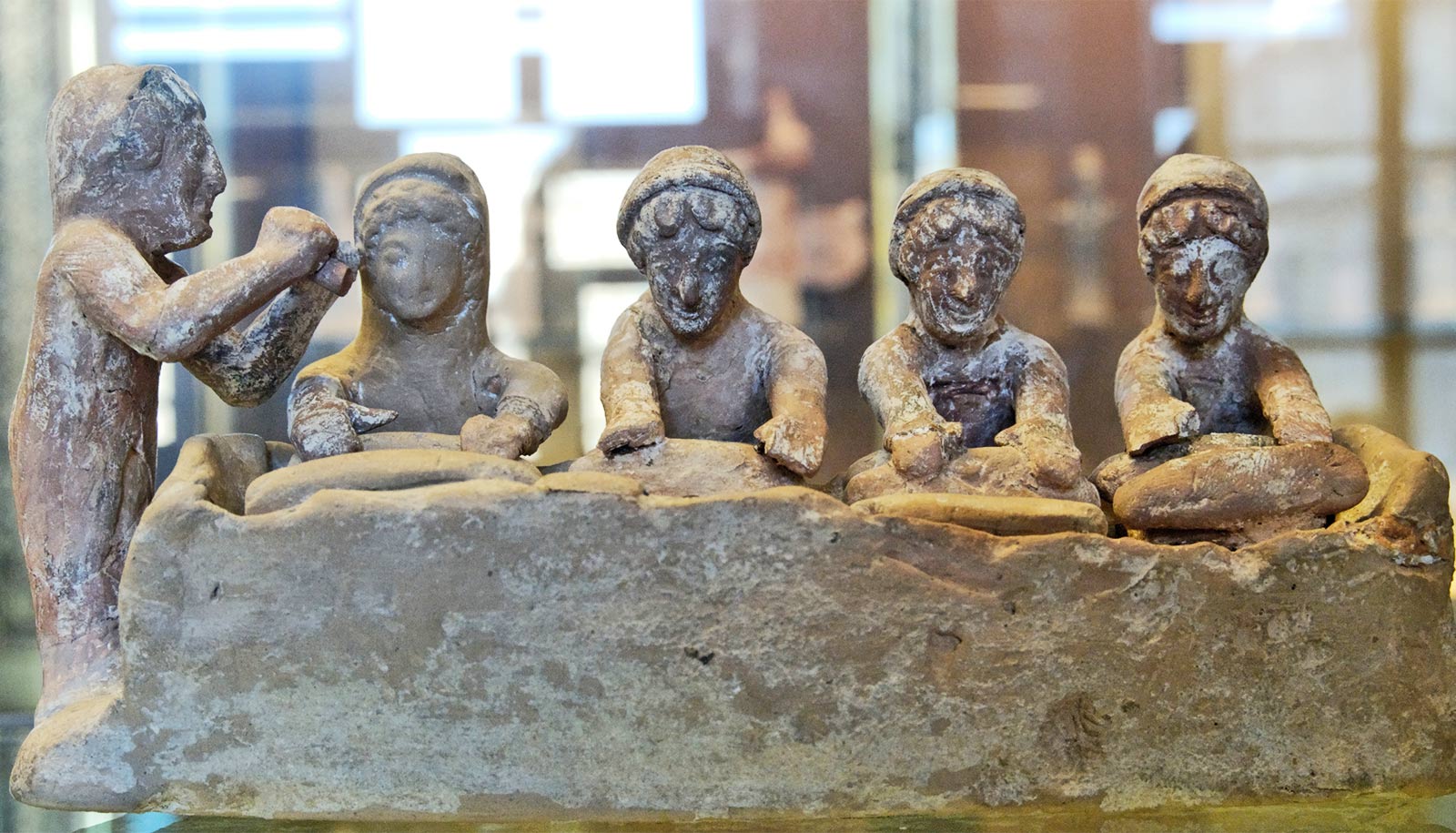Scientists have pinpointed the source of the bizarre shatter-resistant behavior of Prince Rupert’s drops—small glass structures that resemble tadpoles.
Prince Rupert’s drops can withstand the blows of a hammer and yet burst into powdery dust by simply snipping their threadlike tails.
“Since the seventeenth century, famous scientists and natural philosophers have been trying to understand the exceptional properties of these drops,” says Srinivasan Chandrasekar, professor of industrial engineering at Purdue University and director of the Center for Materials Processing and Tribology. “Rupert’s drops have been a curiosity for about 400 years.”
Germany’s Prince Rupert brought five of the enigmatic drops to England and presented them to King Charles II, who became interested in their extraordinary properties.
“On one hand, the head can withstand hammering, and on the other hand, the tail can be broken with just the slightest finger pressure, and within a few microseconds the entire thing shatters into fine powder with an accompanying sharp popping noise,” Chandrasekar says.
To make the discovery, researchers used a technique called integrated photoelasticity, pioneered by Hillar Aben, a scientist at Tallinn University in Esotonia who is lead author of the paper in Applied Physics Letters.
The measurements reveal the complex stress distribution in the drop as rainbow-colored bands when viewed through polarizing filters. Mathematical techniques, similar to those used in reconstructing 3D information from medical CT scans, are then used to precisely recover the stresses based on the band patterns.
Formulas show how metallic glass morphs under stress
The new research is an extension of work that Chandrasekar and University of Cambridge physicist Munawar Chaudhri, corresponding author on the new paper, conducted over 20 years ago.
In their 1994 work, they showed, using high-speed photographic analysis of drop disintegration at nearly 1 million frames per second, individual cracks accelerating from the drop’s tail toward the head at more than 4,000 mph. This explained their explosive disintegration when the tail was snipped off, an intriguing property of the drops.
While the 1994 research paper focused on the tail, the new research concentrates on the head’s amazing shatter-resistant behavior.
Findings showed the high strength of the head comes from compressive stresses calculated at around 50 tons per square inch, making them as strong as some grades of steel.
The drops, also known as Batavian tears, are made of glass having a “high thermal expansion coefficient,” which is needed to create the compressive residual stresses that provide the shatter-resistance. They are produced by dropping red hot blobs of molten soda-lime or flint glass into cold water, quickly cooling in a process called quenching. It is similar to processes used to make shatter-resistant glasses like those in today’s cellphone screens.
“The first patents to strengthen glass were in the 19th century, so there was a time lag of more than 200 years,” Chandrasekar says.
Tough little ‘water bears’ inspire new glass
On cooling down and solidifying, the drops form in a tadpole shape with bulbous head and long threadlike tail, which combined, are about four inches long. The surface of the drops cools faster than the interior, producing a combination of compressive stresses on the surface, and compensating tensile—or pulling—stresses in the interior of the drops.
“The tensile stress is what usually causes materials to fracture analogous to tearing a sheet of paper in half,” says postdoctoral associate Koushik Viswanathan, a postdoctoral researcher at Purdue and a coauthor of the paper. “But if you could change the tensile stress to a compressive stress, then it becomes difficult for cracks to grow, and this is what happens in the head portion of the Prince Rupert’s drops.”
The Estonian Research Council, the National Science Foundation, and the US Army Research Office supported the work.
Source: Purdue University



